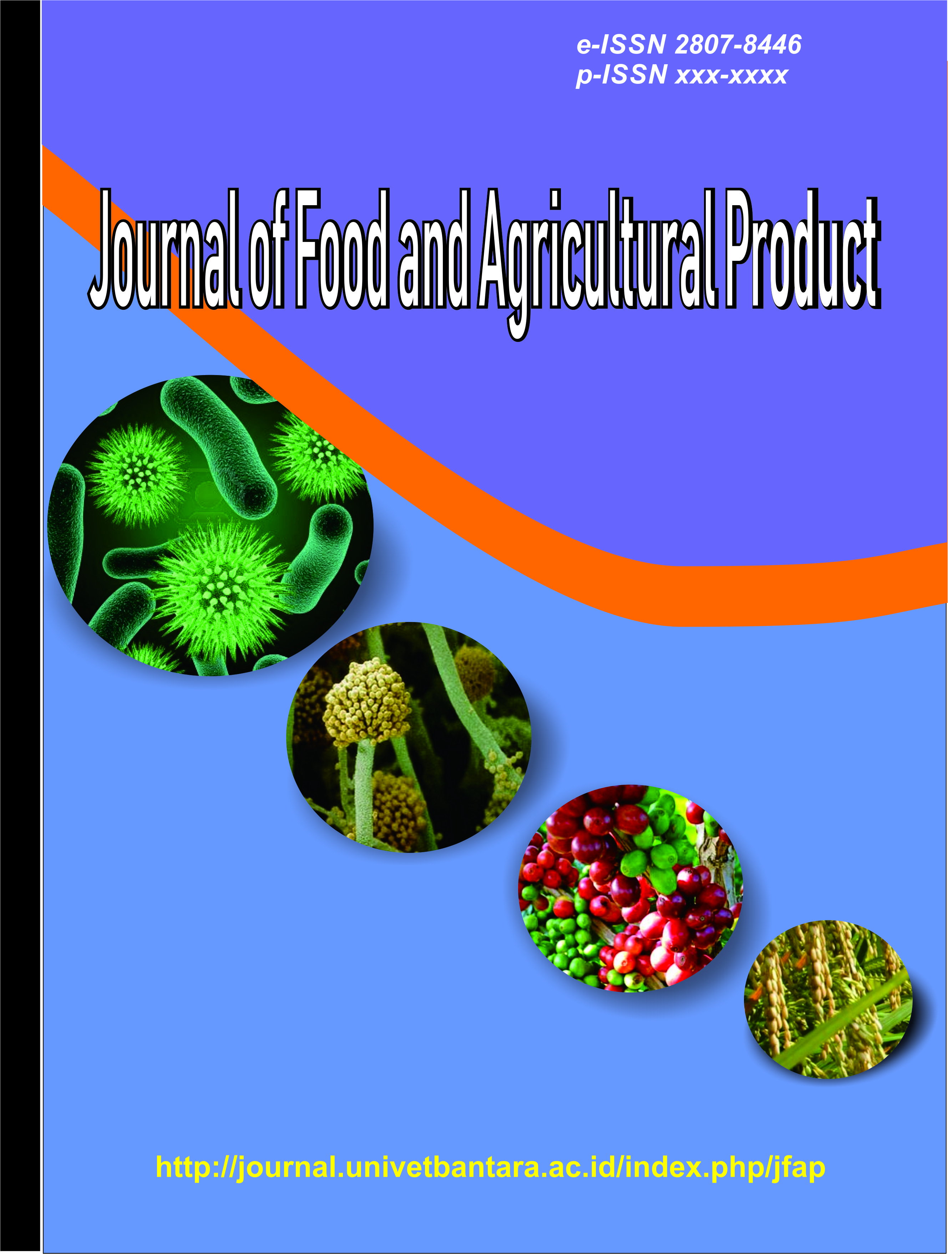Review of Secondary Metabolite Identification Methods and Antimicrobial Activities of Tubers in Indonesian
DOI:
https://doi.org/10.32585/jfap.v5i2.7256Abstract
The activity of inhibiting bacterial growth has been extensively studied from various natural materials in Indonesia. One part of plants which is contains active compounds that inhibit bacterial growth is local tubers such as gadung, sweet potatoes, porang, suweg, and several other types of tubers. The bacterial inhibitory secondary metabolite compounds contained in tubers like saponins, tannins, quinones, flavonoids, alkaloids, and phenols. These compounds exhibit antibacterial activity in the form of inhibition zone diameters against Escherichia coli, Staphylococcus aureus, and Salmonella sp. The 15% methanol extract of Angiotepris sp. tubers, containing flavonoid and phenolic compounds, exhibited the best inhibition zone diameter against Staphylococcus aureus, measuring 28.4 mm. This article explains the differences in bacterial inhibition activity demonstrated by 13 types of tubers, with a total of 79 variations in extraction treatments, including the concentrations and solvents used.
Keywords: antibacterial, secondary metabolites, tubers, inhibitors, inhibition zone
Downloads
Downloads
Published
How to Cite
Issue
Section
License
Copyright (c) 2025 Dzikri Anfasa Firdaus, Eka Wijayanti, Roch Galih Saktya Candraningrum

This work is licensed under a Creative Commons Attribution-NonCommercial-ShareAlike 4.0 International License.



